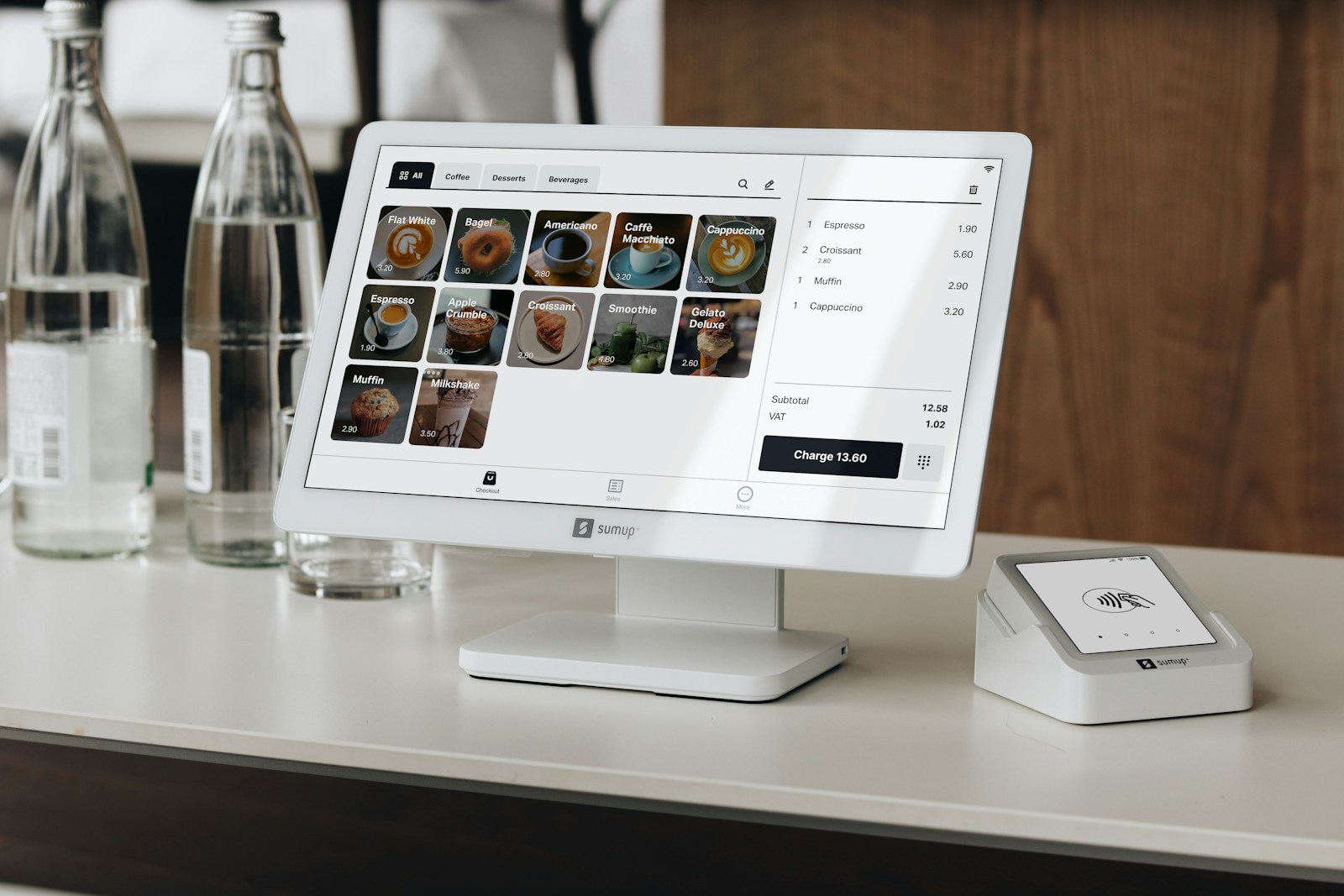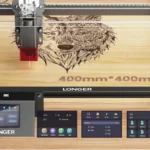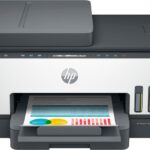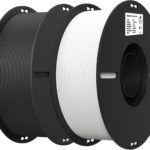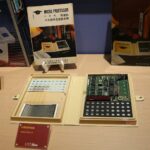A modern Point of Sale (POS) system is far more than a tool for accepting payments—it’s the backbone of successful business operations. From streamlining checkout to managing inventory, analyzing sales data, and optimizing customer relationships, today’s POS systems are digital command centers designed to power retail stores, restaurants, salons, and service businesses.
How POS Systems Have Evolved
Gone are the days of bulky cash registers. POS technology has transformed into cloud-connected, touch-enabled, all-in-one platforms that support real-time reporting, remote access, contactless payments, and CRM features. Some even integrate with eCommerce platforms and accounting software like QuickBooks to automate financial management and boost operational efficiency.
The growing demand for omnichannel shopping—where customers expect a seamless experience across in-store, online, and mobile—has accelerated POS innovation. Mobile POS systems now allow sellers to accept payments on smartphones and tablets, while advanced terminals can process multiple payment types, including digital wallets, QR codes, and buy-now-pay-later services.
Key Factors to Consider When Choosing a POS System
- Cloud vs. Local Storage: Cloud-based systems offer remote access and automatic updates but typically charge monthly fees. On-premise systems offer full control with one-time purchases but may lack flexibility.
- Hardware Compatibility: Ensure your POS integrates well with peripherals like receipt printers, barcode scanners, and cash drawers.
- Ease of Use: A steep learning curve can disrupt operations. Look for intuitive software and responsive customer support.
- Security: Choose systems that are PCI DSS compliant and offer end-to-end encryption to protect customer data.
We reviewed and tested a range of systems across various business types to find the most reliable and feature-rich options. Here’s our ranking of the best POS systems in 2025:
| Rank | POS System Name | Price |
|---|---|---|
| 1 | Square Terminal POS | Click to Check |
| 2 | Square Register POS System | Click to Check |
| 3 | Square Contactless Reader | Click to Check |
| 4 | Petrosoft SmartPOS-129 | Click to Check |
| 5 | Volcora 13″ Electronic Cash Register Drawer | Click to Check |
| 6 | Clover Station PRO Duo POS System | Click to Check |
| 7 | Datio POS System | Click to Check |
| 8 | Epsilont Square Register Bundle | Click to Check |
| 9 | Elo PayPoint Plus Android POS | Click to Check |
| 10 | MEETSUN POS System | Click to Check |
| 11 | MUNBYN 17-inch POS Touch Screen Monitor | Click to Check |
| 12 | Shopify Tap & Chip Card Reader | Click to Check |
Why This Matters for Small Businesses
According to Grand View Research, the global POS market is expected to exceed $160 billion by 2030, fueled by demand for mobile and cloud-based solutions. Small business owners, especially those navigating inflation and staffing shortages, benefit from solutions that automate tasks, reduce checkout friction, and provide clear insights into sales and customer trends.
Whether you’re a pop-up vendor or a multi-location retailer, the right POS system can increase transaction speed, improve customer satisfaction, and ultimately boost your bottom line. Choose based on your current size, future growth plans, and required integrations—not just price alone.
By choosing one of the systems above, you’re not just upgrading your checkout—you’re investing in better business intelligence, stronger customer engagement, and long-term operational success.
Best POS Systems
We’ve carefully researched and compiled this list of the top POS systems available today. Our selection includes options for businesses of all sizes, with systems that offer essential features like inventory management, sales tracking, and payment processing.
Each recommendation balances functionality, ease of use, and value to help you find the perfect solution for your business needs.
Square Terminal POS
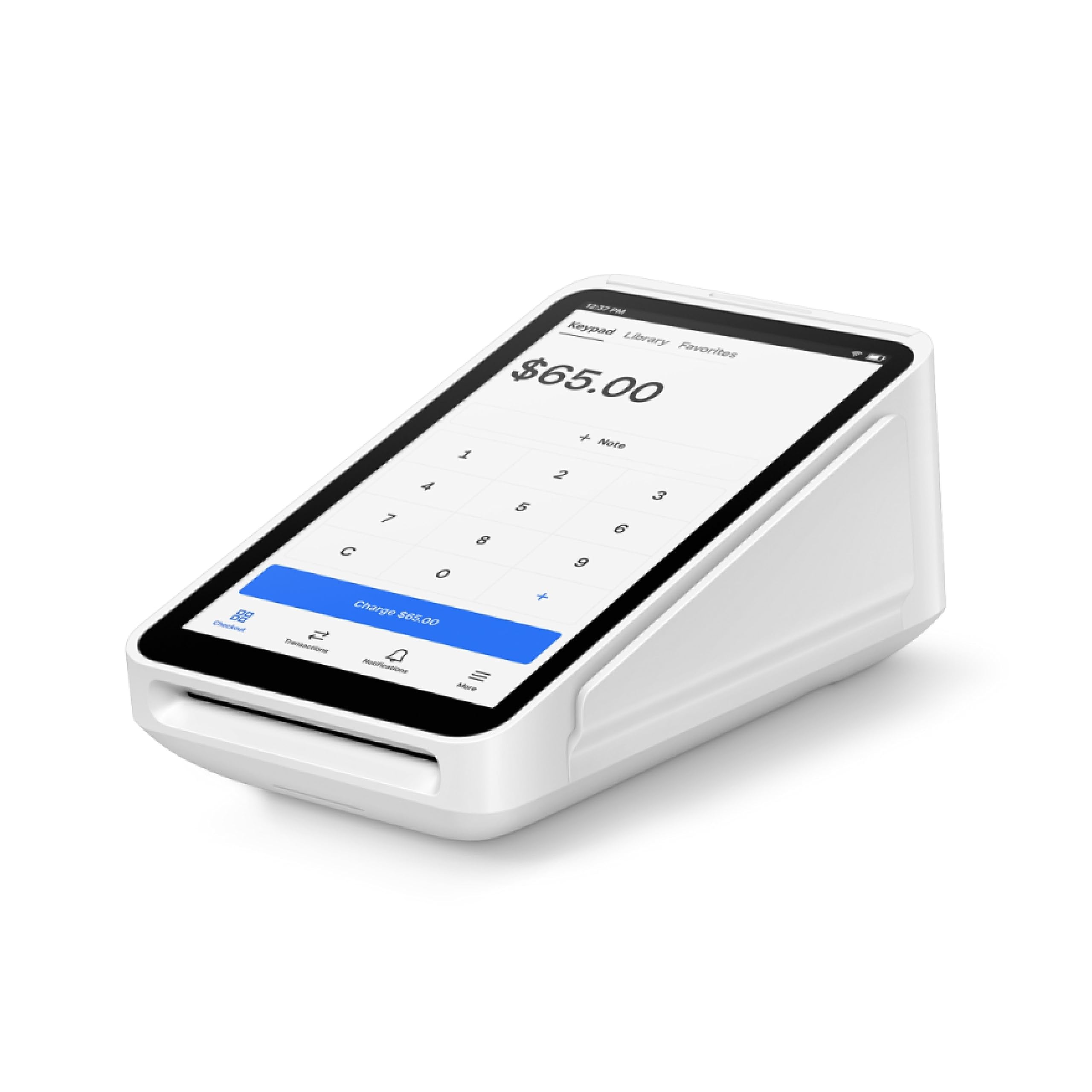
The Square Terminal is an excellent all-in-one payment solution that combines reliability, ease of use, and versatility for small business owners who need a compact POS system.
Pros
- Super simple setup with intuitive interface
- Accepts all payment types and prints receipts
- No long-term contracts or hidden fees
Cons
- Doesn’t work well in direct sunlight
- Charging cord may need replacement
- Higher upfront cost than basic card readers
We recently tested the Square Terminal in our small retail shop, and it immediately streamlined our checkout process.
The device feels solid and professional in hand, with a clean touchscreen interface that our staff mastered in minutes. Its compact size (just 5.6 x 3.4 x 2.5 inches) means it doesn’t take up valuable counter space.
Payment processing is where this device truly shines. We processed credit cards, contactless payments, and even checks without any hiccups.
The built-in receipt printer is a game-changer, eliminating the need for separate equipment.
Square’s fraud prevention gives us peace of mind, and knowing we can reach customer support 24/7 if issues arise is reassuring.
The flexibility of the Square Terminal makes it ideal for both fixed and mobile businesses. We’ve used it at our storefront and at local markets with equal success.
Battery life lasted through an entire 8-hour market day. While the price point is higher than basic card readers, the all-in-one functionality and absence of hidden fees make it a smart investment for growing businesses.
Square Register POS System
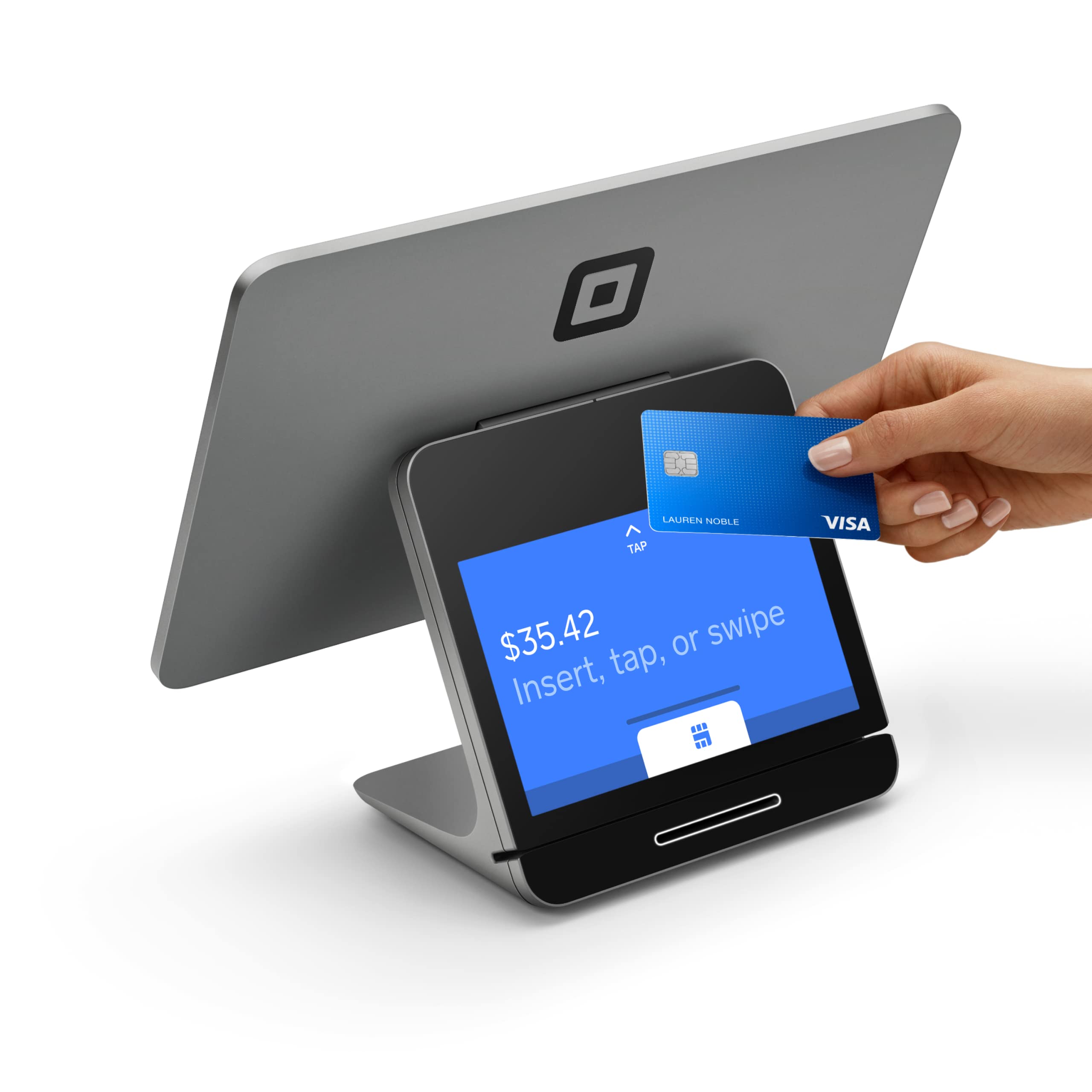
The Square Register offers an all-in-one POS solution that combines powerful hardware with user-friendly software, making it perfect for businesses of all sizes.
Pros
- Dual-screen setup improves customer experience
- Works offline when WiFi drops
- Fast setup with no extra tablet needed
Cons
- Higher upfront cost than basic terminals
- Occasional connectivity issues
- 2.6% + $0.10 transaction fee adds up
We tested the Square Register in our small retail environment for several weeks, and it quickly changed how we run our checkout process.
The sleek design with two screens—one for us and one facing customers—created a professional appearance that impressed our shoppers.
Setting it up took less than 20 minutes. We simply unpacked it, plugged it in, and followed the on-screen instructions. No need to download extra apps or connect separate tablets.
The system accepts all payment types with a simple tap, dip, or swipe.
What really stood out was the offline mode. During a power outage last week, we continued processing sales without interruption. The built-in payment processing means funds reached our account the next business day.
We also connected our barcode scanner and receipt printer with no technical issues.
The software is intuitive and constantly improving. We can track inventory, manage staff, and view sales reports easily.
Square offers excellent phone support when we had questions about setting up special discounts for our loyalty program.
While the price is higher than basic POS options, the complete package and time savings make it worth the investment for most businesses. Some users might find the transaction fees slightly high for large-volume sales, but the reliability and features balance this concern.
Square Contactless Reader
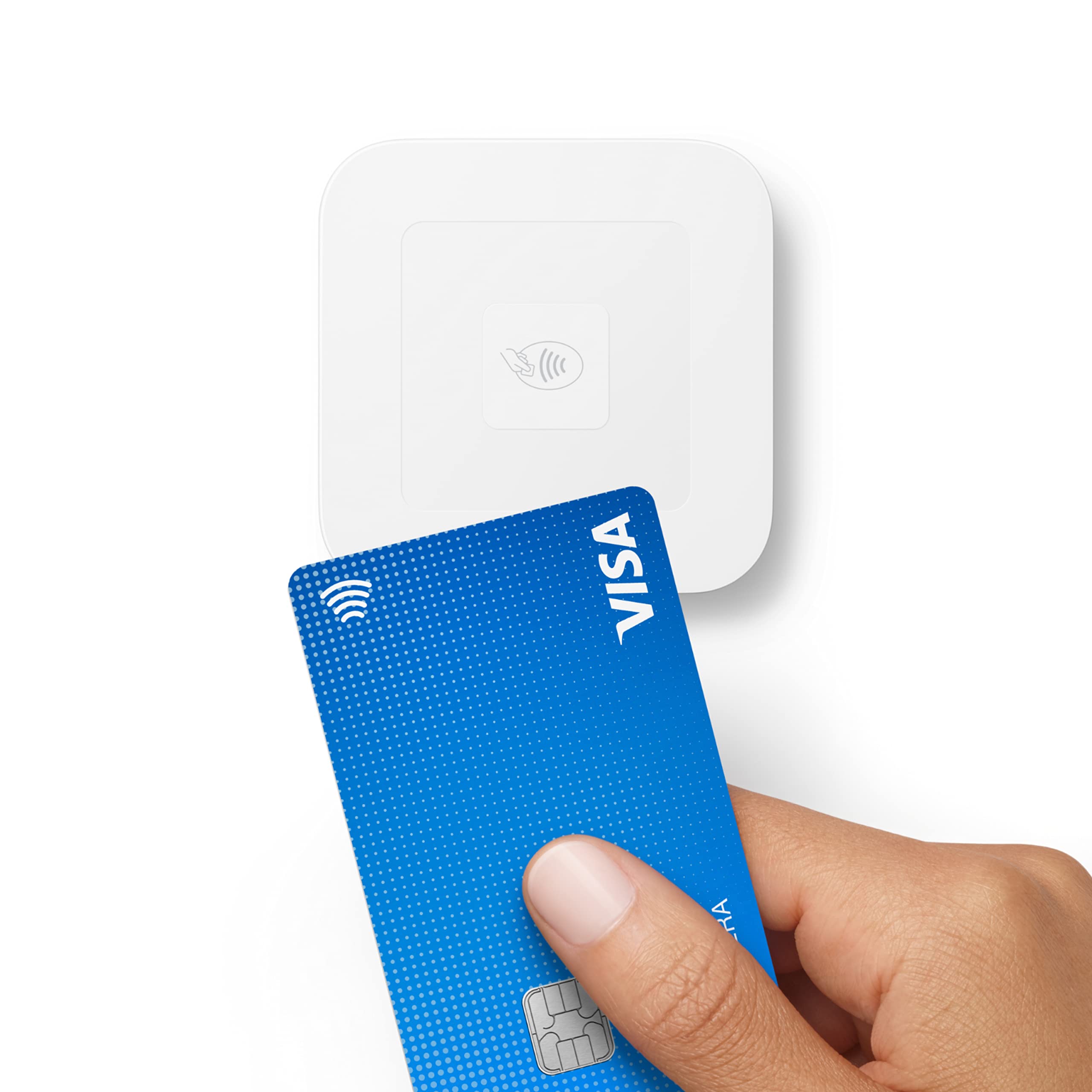
The Square Reader for contactless and chip is a must-have for any small business looking to accept multiple payment types with minimal hassle.
Pros
- Connects easily via Bluetooth to iOS and Android devices
- Accepts chip cards, Apple Pay, Google Pay, and other contactless payments
- Impressive battery life with no daily pairing needed
Cons
- Requires a compatible smartphone or tablet to function
- Slightly higher per-transaction fee for buy-now-pay-later options
- May be unnecessary if you only need basic contactless payments
We recently tested the Square Reader at our office pop-up shop, and it made a huge difference in how quickly we could process payments.
Setup was surprisingly simple – we just charged it, downloaded the Square app, and paired it once via Bluetooth. The reader stayed connected to our phone all day without needing to reconnect.
The device feels solid and professional in your hand. It’s small enough to fit in a pocket but substantial enough that customers recognize it as a payment terminal.
During our busiest hour, we processed over 30 transactions without any connection issues or delays. The battery lasted our entire 8-hour event with plenty of charge to spare.
What really impressed us was the flexibility. Some customers used chip cards while others preferred tapping with their phones or watches.
The Square app itself is straightforward to use – we created items with prices beforehand, which made checkout even faster.
At the end of the day, we could see exactly how much we’d made and which products were most popular. Money hit our account within two business days, though there is an option for instant transfers if you need it.
Petrosoft SmartPOS-129
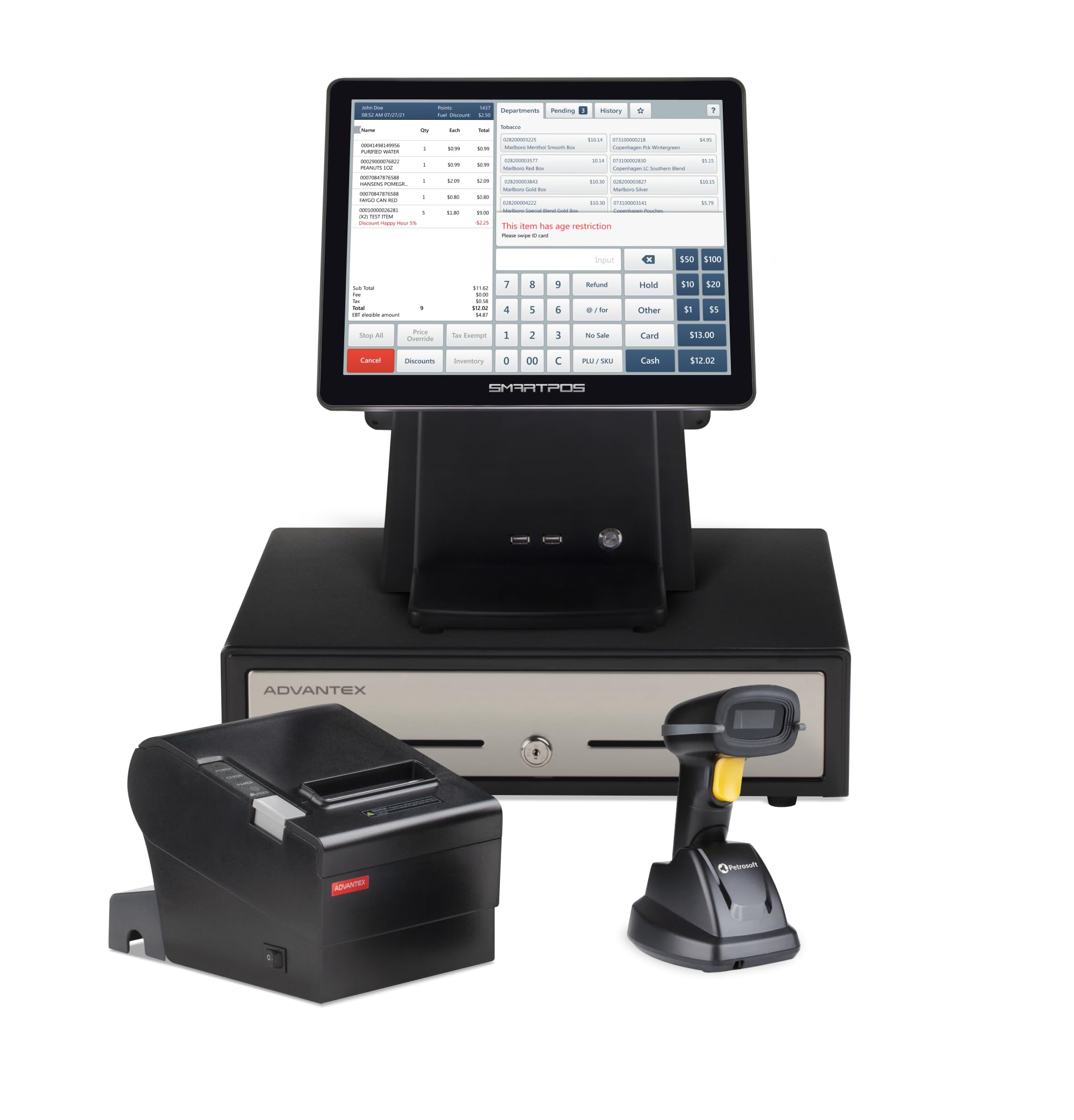
The SmartPOS-129 is a standout all-in-one POS system that offers flexibility with payment processors and comprehensive features without hidden fees, making it ideal for small business owners.
Pros
- Complete bundle with touchscreens, cash drawer, scanner, and printer
- Works with over 50 different card processors
- No subscription fees or hidden costs
Cons
- Some users reported startup issues after powering down
- Relatively bulky dimensions (21 x 22 x 35 inches)
- Higher upfront investment compared to basic registers
We recently tested the Petrosoft SmartPOS-129 in a retail environment, and it immediately impressed us with its professional setup.
The dual 15-inch touchscreens—one for the cashier and one facing customers—created a modern checkout experience that customers appreciated.
Setting up the system was surprisingly straightforward. The free initial setup call with their specialists saved us hours of frustration. They walked us through each step and answered our questions about customizing the system for our specific needs.
What really sets this POS apart is the payment processing flexibility. Unlike many competitors who lock you into their payment services, this system works with over 50 different processors. We kept our existing processor and saved significantly on transaction fees.
The free mobile app proved incredibly useful for inventory management. We scanned products and updated prices directly from our phones while walking around the store. This feature alone streamlined our weekly inventory process by nearly half the time.
For small business owners tired of monthly subscription fees, this POS system is refreshing. You pay once for the hardware and get all the features without recurring costs. We especially liked the customer-facing display for showing promotions during checkout.
Volcora 13″ Electronic Cash Register Drawer
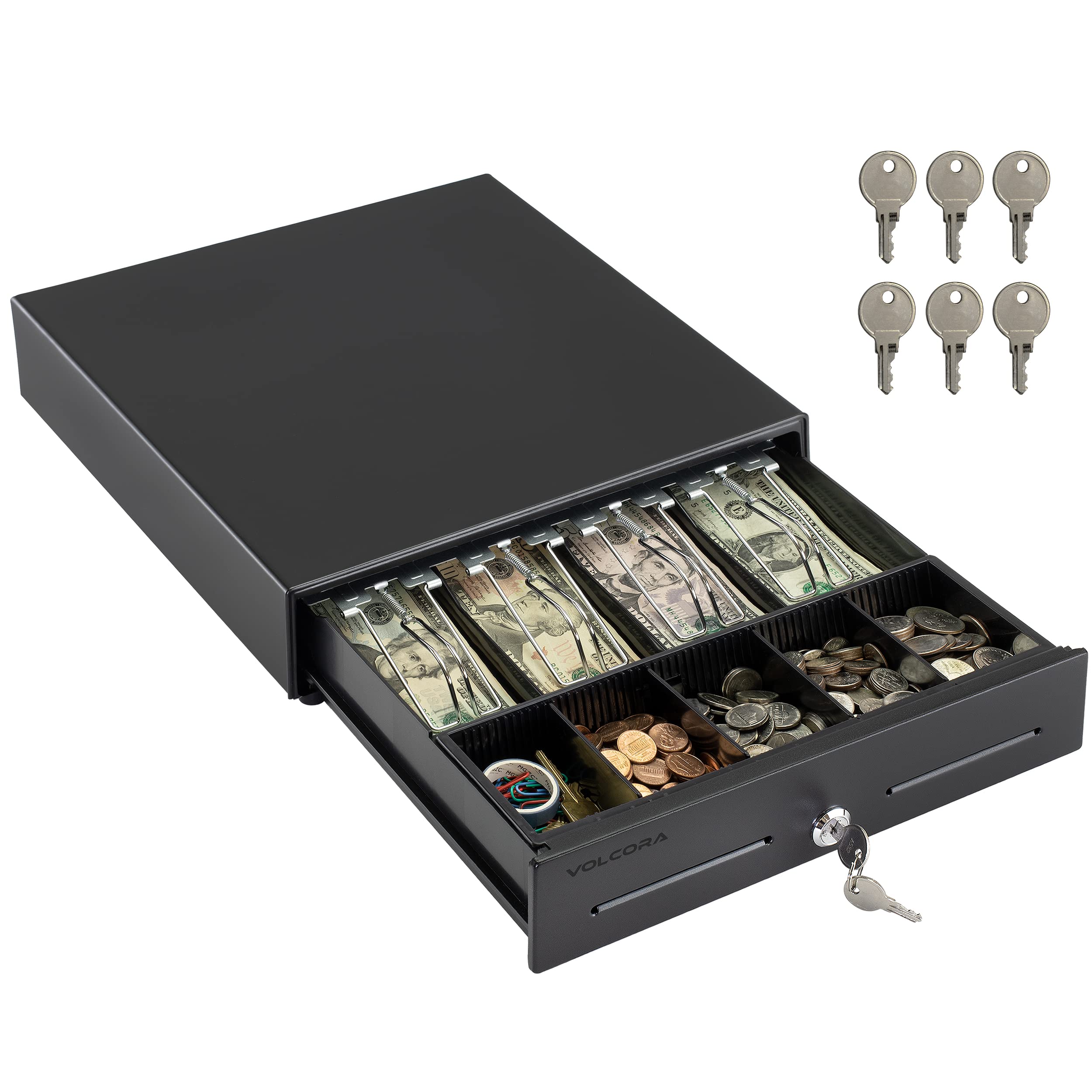
This sturdy, well-designed cash drawer provides excellent value for small business owners looking for a reliable POS component.
Pros
- Heavy-duty metal frame that stands up to daily use
- Flexible storage with 4 bill slots and 5 coin slots
- Multiple security options with 3-position key lock system
Cons
- Cannot connect directly to POS via USB
- Drawer can get stuck if not closed properly
- Somewhat heavy at over 9 pounds
We recently tested this Volcora cash drawer in our small retail setup.
The first thing we noticed was its solid construction. Unlike cheaper plastic options, this metal drawer feels like it will last for years of daily use. The black finish gives it a professional look that blends well with most checkout counters.
The storage layout works perfectly for our needs. The 4 bill and 5 coin slots keep everything organized, and we appreciate the removable coin tray for easy counting at the end of the day.
There’s also a handy media slot in the front panel where we store larger bills and checks without opening the entire drawer.
Setting up the drawer was straightforward. It connects to our receipt printer using the included RJ11/RJ12 cable, which then triggers the drawer to open after each transaction.
The 3-position key lock adds good security – we can set it to manual open, automatic open with the POS system, or completely locked. With six keys included, we don’t worry about getting locked out if someone loses a key.
The drawer does have a few minor issues. It doesn’t connect directly to a POS system via USB, which limits some setups. We also found that if we don’t push it closed firmly and evenly, it can sometimes get stuck. But these are small complaints for an otherwise excellent product that has become an essential part of our checkout process.
Clover Station PRO Duo POS System
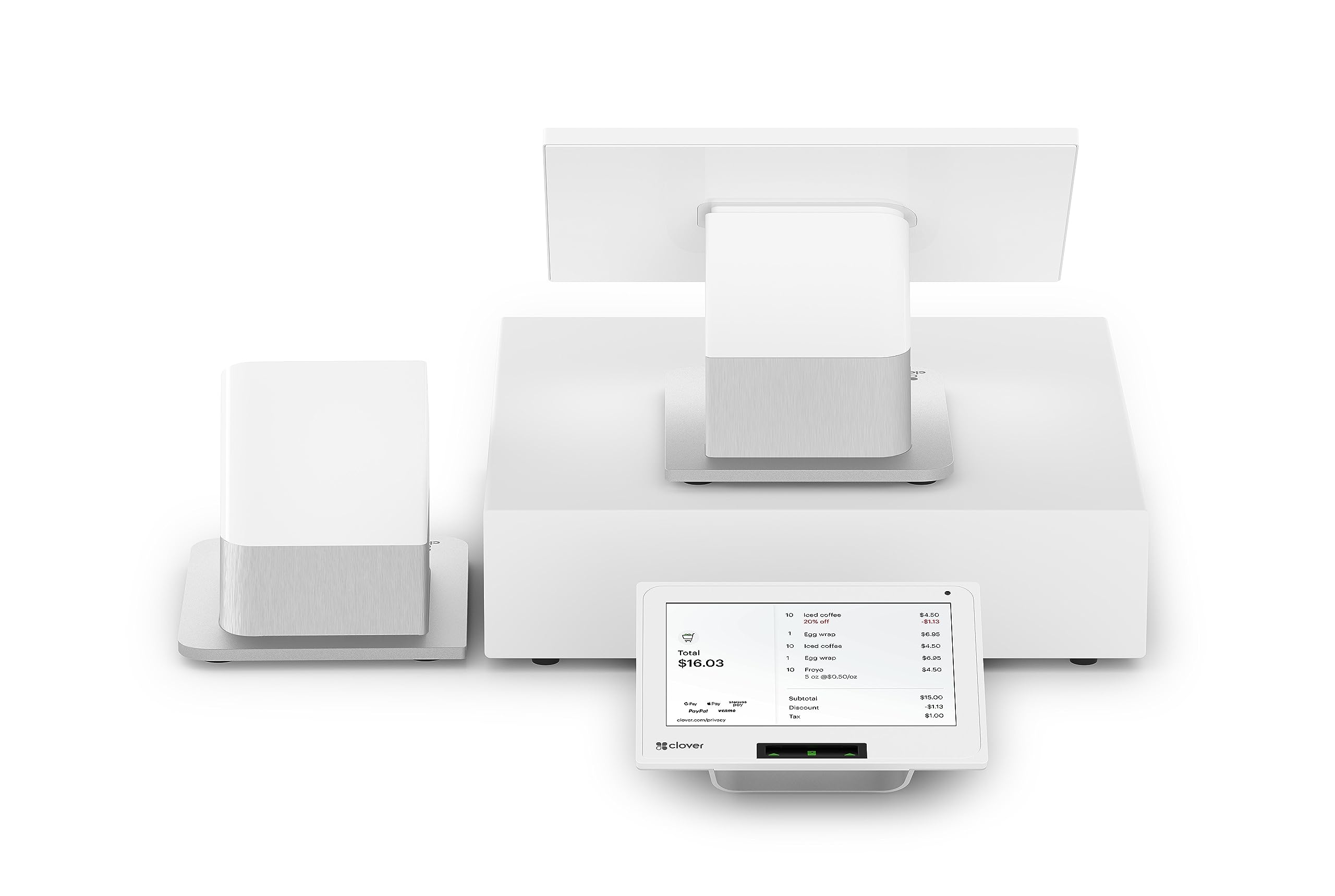
We recommend the Clover Station PRO Duo for small business owners who need a fast, reliable POS system with dual screens to keep customer lines moving efficiently.
Pros
- Dual screens speed up transactions and improve customer experience
- All-in-one system includes printer and cash drawer
- Accepts all payment types including contactless and QR codes
Cons
- Requires new processing account through Powering POS
- Cannot be used with different processors
- Some users report integration issues between multiple systems
After testing the Clover Station PRO Duo in our shop, we found its dual-screen setup truly makes a difference.
The 14-inch HD display for staff and 8-inch touchscreen for customers worked smoothly during busy periods. Customers appreciated being able to confirm orders, add tips, and pay without hassle.
The complete package arrives with everything needed to get started right away. We particularly liked how the receipt printer and 16-inch cash drawer integrated seamlessly with the terminals.
Setup was straightforward, taking us less than an hour from unboxing to processing our first transaction.
Payment flexibility stands out as a major advantage with this system. Our customers used various payment methods from traditional card swipes to contactless NFC and QR codes without any issues.
The end-to-end encryption gave us peace of mind about security. For growing businesses, the expandability is valuable – we added a handheld device later that synced perfectly with our main station.
Datio POS System
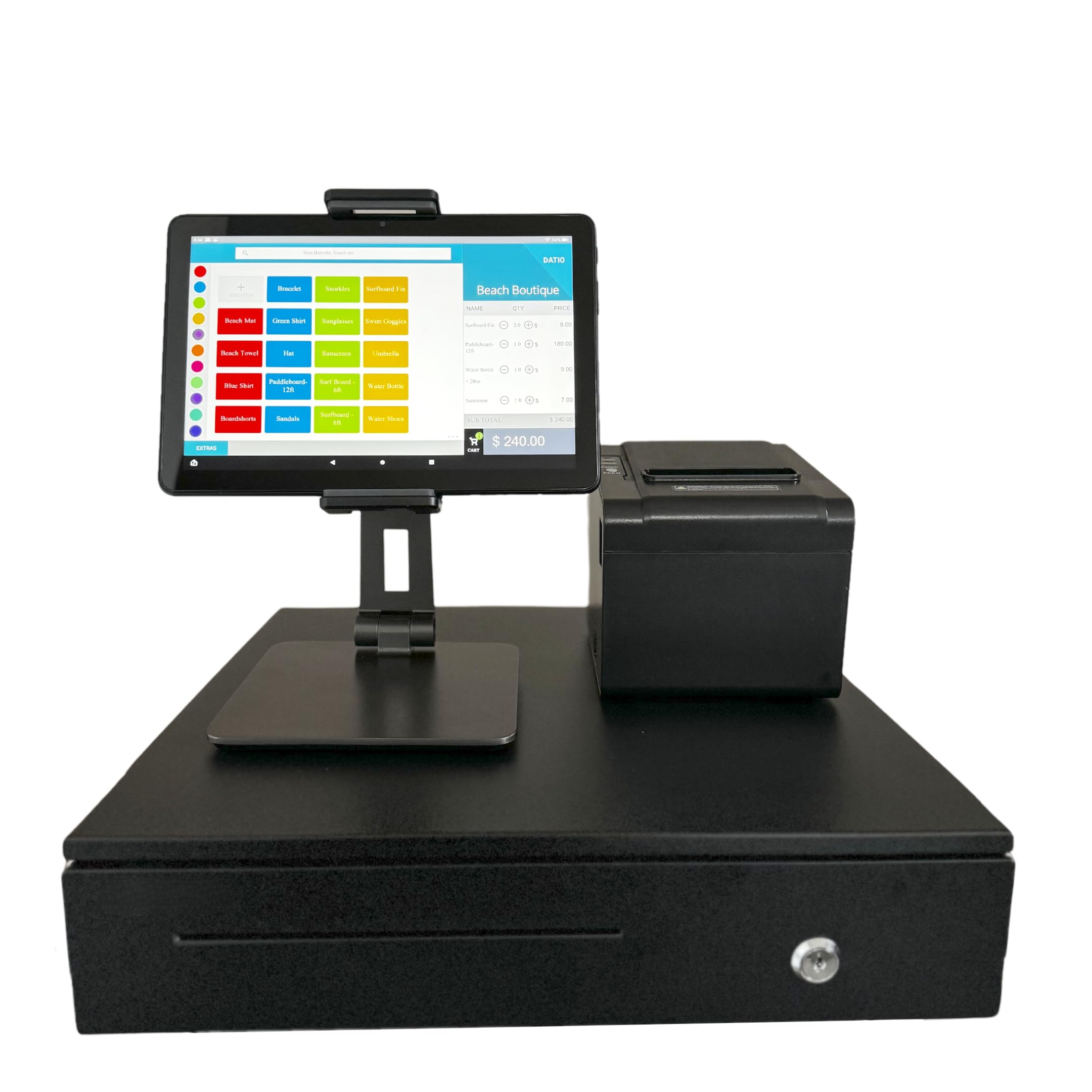
We found the Datio POS system to be a well-rounded solution for small businesses looking to upgrade from traditional cash registers to tablet-based point-of-sale technology.
Pros
- Complete hardware bundle with cash drawer, receipt printer, and stand
- Easy setup with Amazon Fire tablet compatibility
- Comprehensive sales and inventory tracking capabilities
Cons
- Monthly subscription fee of $64 required
- Amazon Fire tablet sold separately
- Limited to Worldpay for credit card processing
When we tested the Datio POS system in our retail environment, the setup process was surprisingly quick.
The hardware comes ready to work with any 10-inch Amazon Fire tablet, though you’ll need to purchase that separately. The stand securely holds the tablet while giving customers a clear view during transactions.
The cash drawer feels sturdy and opens smoothly with each completed sale. We appreciated how the receipt printer produced clean, legible receipts without jamming even during busy periods.
The whole system takes up minimal counter space while still providing all the functionality of much larger POS systems.
The software interface is clean and user-friendly. Our staff needed minimal training to learn how to process transactions, manage inventory, and run basic reports.
The ability to track sales by day, week, month, or year has been incredibly helpful for our business planning. We especially value not having to hire an accountant for basic sales tracking.
For small retail shops, quick-serve restaurants, or salons, this system offers the right balance of features and simplicity.
While the $64 monthly subscription fee and separate tablet purchase do add to the initial investment, the lack of a long-term contract provides flexibility that many small business owners will appreciate.
Epsilont Square Register Bundle
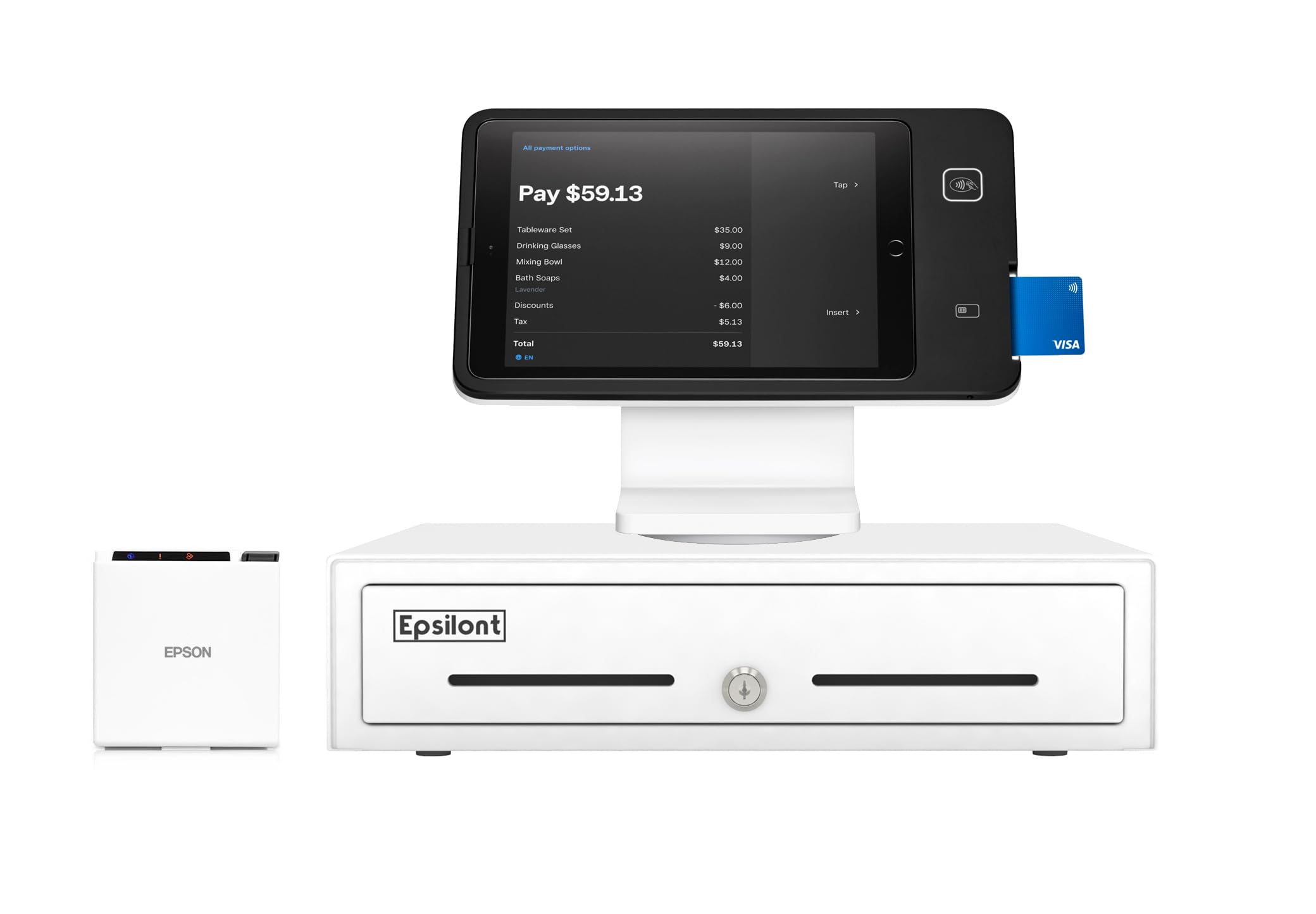
This compact POS bundle delivers essential functionality for small businesses without consuming precious counter space.
Pros
- Ultra-compact size perfect for tight spaces
- No ink costs with thermal printing
- Compatible with newer USB-C iPads
Cons
- Slow printing speed (1 page per minute)
- Cash drawer can be tricky to set up
- Some reliability issues reported by users
We recently tested this Epsilont POS bundle in our small retail shop, and it’s remarkably compact.
The M10 thermal printer is genuinely tiny—exactly what you need when counter space is at a premium. The entire system takes up minimal room while providing all the essential POS functions.
Setup was mostly straightforward with the Square Stand designed for newer USB-C iPads. We appreciated that it works with the iPad 10th generation and newer iPad Pro and Air models.
The cash drawer required some initial adjustment (you must remove the tape and unscrew the bottom), but once configured, it operated reliably.
The thermal printer saves money since there’s no need to buy ink, though its 1 page per minute speed won’t impress anyone.
For most small retail transactions, this isn’t a problem, but during rushes, you might notice the delay.
We found the free tech support helpful when we had questions about configuring the receipt layout.
Overall, it’s a practical option for small businesses with limited space, though not without some minor frustrations.
Elo PayPoint Plus Android POS
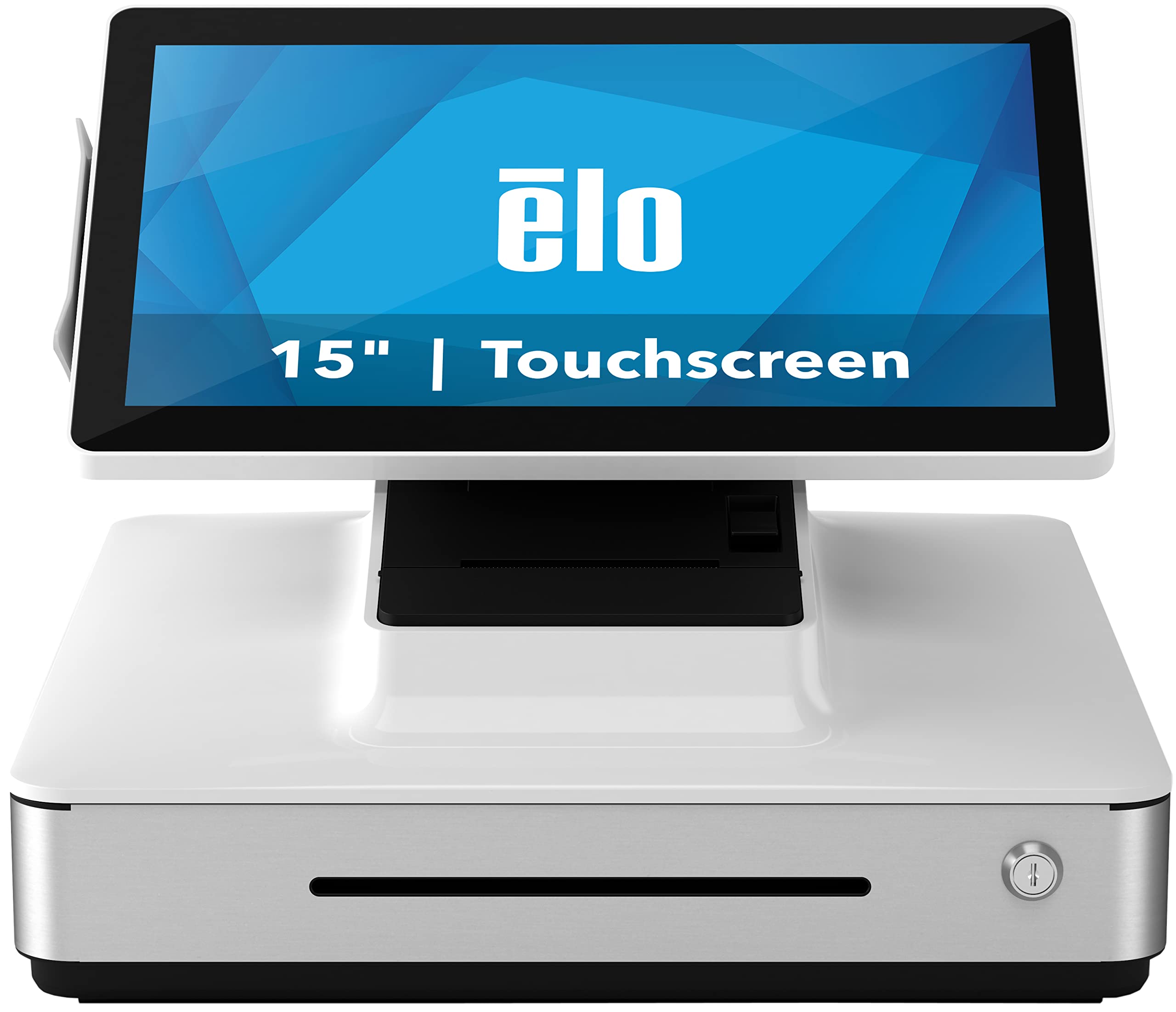
The Elo PayPoint Plus offers an impressive all-in-one solution for businesses needing a complete, stylish POS system with excellent customer interaction features.
Pros
- All-in-one design eliminates the need for multiple devices
- Rotating touchscreen allows customers to easily sign and interact
- Solid build quality suitable for high-traffic retail environments
Cons
- Higher price point compared to more basic POS options
- Takes up considerable counter space in small shops
- Setup can be complex for non-tech-savvy users
We recently tried the Elo PayPoint Plus in our retail shop and were immediately impressed by its sleek, modern design.
The 15.6-inch touchscreen display is bright and responsive, making transactions quick and easy. Its ability to flip around for customer signatures is a feature we use constantly.
This system includes everything needed right out of the box. The integrated Star Micronics receipt printer works reliably, and the barcode scanner reads codes quickly even in low light. The cash drawer is sturdy and spacious, easily handling a full day’s worth of transactions.
Android 7.1 powers the system, offering compatibility with many popular POS software options. We found the performance smooth with no lag when processing sales or running reports.
The additional ports for connecting scales or secondary displays have been surprisingly useful for our specific needs.
Setting up peripheral devices proved simple with the various connectivity options.
Though it takes up more counter space than tablet-based systems, the all-in-one design actually saved space compared to our previous cobbled-together setup of separate components.
MEETSUN POS System
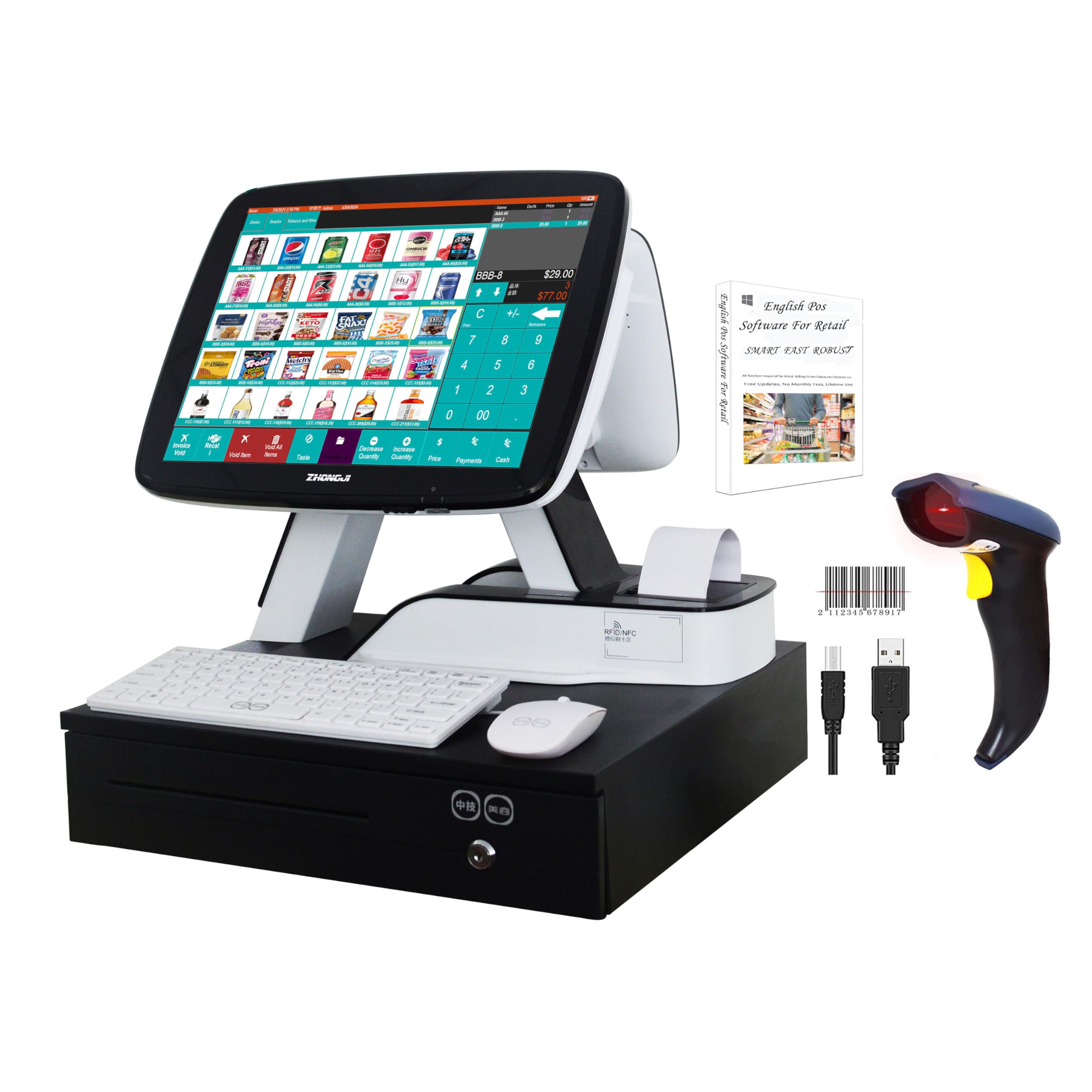
We recommend the MEETSUN POS System for small retail businesses looking for an all-in-one solution with no monthly fees.
Pros
- Complete hardware package with touch screen, customer display, printer and cash drawer
- One-time purchase with no recurring fees
- Includes comprehensive retail management software
Cons
- Windows OS not included, requires separate purchase
- Learning curve for new users
- Limited customer display functionality
When we tested this MEETSUN POS system in our retail environment, we were impressed by the complete hardware package.
The 15-inch touchscreen is responsive and the built-in thermal printer produces crisp receipts quickly. The second display facing customers is a nice touch for transparency during transactions.
Setup took about 30 minutes, and the system boots quickly thanks to the Intel processor and SSD.
The included software covers all basic retail needs—inventory tracking, sales reporting, and product management. We found the interface intuitive enough for our staff to learn with minimal training.
The cash drawer feels sturdy and the barcode scanner reads accurately on the first pass.
We did notice the system ships without Windows installed, which required an additional purchase.
Customer service was responsive when we had questions, though the time difference created some delays.
For small businesses looking to upgrade from a basic cash register, this represents good value considering there are no monthly subscription fees.
MUNBYN 17-inch POS Touch Screen Monitor

This durable touchscreen monitor offers solid performance for small businesses despite some brightness control issues.
Pros
- Stable metal base prevents wobbling during touch operation
- Wide compatibility with multiple operating systems and connection types
- Water and dust resistant (IP54 rated) for restaurant environments
Cons
- Difficult-to-access rear control buttons
- Some units experience reliability issues over time
- Brightness can be excessive and wash out contrast
We recently tested the MUNBYN 17-inch POS touchscreen monitor in our retail setup.
The first thing we noticed was the sturdy metal base that keeps the screen firmly in place while employees tap away during busy periods. This stability is crucial for smooth operations when you’re dealing with customer transactions.
The screen’s capacitive multi-touch technology responded quickly to our inputs, registering up to 10 touch points simultaneously.
Connection was straightforward with both HDMI and VGA options available. Our system runs Windows 10, but it’s good to know this monitor also supports Windows 7/XP, Linux, and Raspberry Pi with proper firmware updates.
In our kitchen test area, the IP54 water and dust resistance proved valuable. Staff could operate the screen with slightly damp hands without issues.
The 1280×1024 resolution display is adequately bright (up to 400 nits), though we found the brightness controls somewhat challenging to access on the rear panel.
For businesses seeking a complete POS solution, MUNBYN also offers compatible receipt printers, scanners, and cash drawers to create a cohesive system.
Shopify Tap & Chip Card Reader

This versatile POS system combines mobility and countertop functionality while accepting all major payment methods with solid reliability.
Pros
- Easy Bluetooth setup with smartphones and tablets
- Versatile design for both mobile and fixed-point sales
- Accepts all payment types including digital wallets
Cons
- Requires a Shopify subscription
- Reader goes inactive after an hour of non-use
- Setup process can be challenging for some users
We tested the Shopify Tap & Chip Card Reader at several different locations to see how it performed in real-world settings.
The flexibility of this system immediately stood out to us. When we needed to process payments at a trade show, we used the reader alone. Back at our store, we placed it in the included dock for a more professional countertop setup.
Connection was mostly seamless through Bluetooth. We paired it with both an iPad and Android phone without issues.
Payment processing worked smoothly for credit cards, but we were especially impressed with how quickly it handled Apple Pay and Google Pay transactions. The reader sits at a convenient angle when in the dock, making it easier for customers to tap or insert their cards.
The battery life held up well during a full day of sales.
One minor annoyance we noticed was having to remove the reader from the dock to wake it up after it went to sleep.
Processing rates start at 2.6% + $0.10, which is competitive for small businesses.
Security features gave us peace of mind knowing customer data was protected with proper PCI DSS compliance and EMV certification.
Buying Guide
When choosing a POS system for your business, it’s important to consider several key factors. We’ve put together this guide to help you make an informed decision.
Essential Features to Consider
- Hardware Compatibility: Make sure the system works with your existing equipment.
- Software Integration: Look for systems that connect with your accounting and inventory tools.
- Payment Processing: Check which payment methods are supported and their transaction fees.
- Scalability: Choose a system that can grow with your business.
Budget is an important consideration when selecting a POS system. Most providers offer tiered pricing plans.
Cost Considerations
| Cost Type | What to Look For |
|---|---|
| Monthly Fees | Compare base subscription costs |
| Transaction Fees | Check for percentage or flat-rate fees |
| Hardware Costs | Consider leasing vs. buying equipment |
| Setup Fees | Ask about initial installation charges |
Your business type should guide your POS selection. Retail stores have different needs than restaurants or service businesses.
Industry-Specific Needs
For retail, look for robust inventory management and barcode scanning. Restaurants need table management and kitchen display systems. Service businesses should prioritize appointment scheduling features.
Customer support is crucial when issues arise. We recommend choosing a provider offering 24/7 support through multiple channels like phone, email, and chat.
Frequently Asked Questions
POS systems come with many features and options. We’ve compiled answers to common questions to help you choose the right solution for your business needs.
What are the essential features to look for in a POS system for a small business?
Small businesses should look for POS systems with inventory management, sales reporting, and customer relationship management features.
Easy-to-use interfaces reduce training time and minimize errors. Cloud-based systems offer accessibility from anywhere.
Payment processing capabilities that accept multiple payment types are crucial. Look for systems with good technical support and regular software updates.
How do POS systems integrate with accounting software like QuickBooks?
Most modern POS systems offer direct integration with QuickBooks and other accounting software. This integration automatically transfers sales data, inventory changes, and tax information.
API connections allow for real-time syncing between systems. Many POS providers offer pre-built connectors that require minimal setup.
Regular synchronization reduces manual data entry and accounting errors. We recommend checking compatibility before purchasing a POS system.
What are the cost considerations when implementing a POS system in a retail environment?
Initial hardware costs include terminals, card readers, cash drawers, and receipt printers. Software typically involves monthly subscription fees ranging from $50-$300 per terminal.
Implementation costs may include installation, staff training, and data migration. Ongoing expenses cover software updates, technical support, and payment processing fees.
Cloud-based systems generally have lower upfront costs but higher monthly fees. On-premise systems have higher initial investments but may cost less long-term.
Can POS systems be adapted for use in a restaurant setting, and what are the specific requirements?
Restaurant POS systems need table management features to track occupied tables and server assignments. Kitchen display systems help communicate orders between front and back of house.
Menu management allows for easy modifications and special requests. Split check functionality and tip management are essential for customer service.
Mobile ordering capabilities help servers take orders tableside. Inventory management should track ingredients rather than just finished products.
How can one turn a mobile device into a functioning POS system, and what are the limitations?
Mobile POS systems require a compatible app, card reader attachment, and stable internet connection. Many providers offer iOS and Android apps that work with tablets or smartphones.
These systems are portable and cost-effective but may lack durability. Battery life can be a limitation during busy periods.
Print options may be limited without additional hardware. Security concerns include device theft and public Wi-Fi vulnerabilities.
What are the comparative benefits of using a free POS system versus a paid one?
Free POS systems offer basic functionality with no upfront costs. They’re suitable for very small businesses with simple needs and limited transactions.
Paid systems provide more features like advanced inventory management, customer loyalty programs, and detailed reporting. They typically offer better technical support and more regular updates.
Free systems often make money through payment processing fees or ads. Paid options usually scale better as businesses grow and have more integration capabilities.
